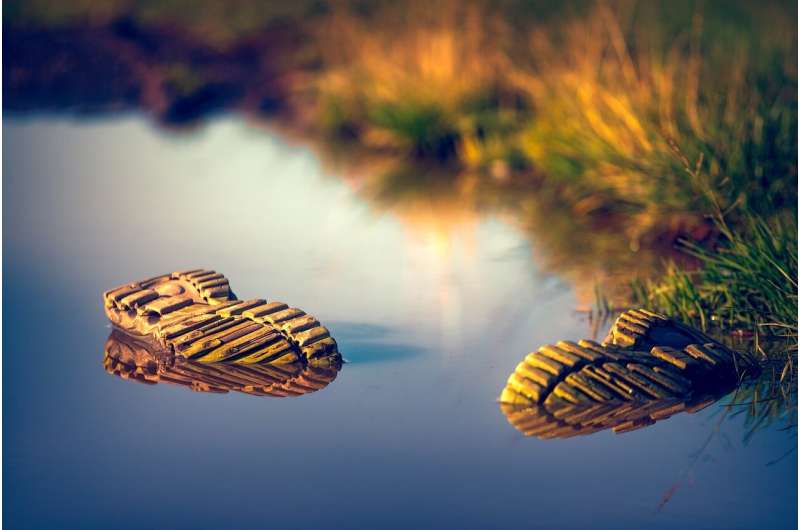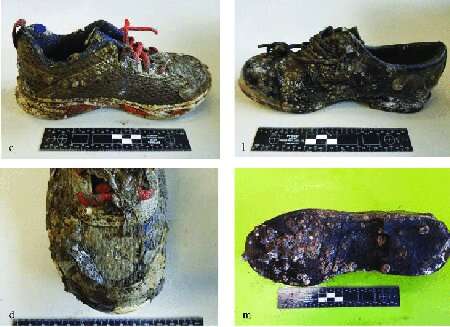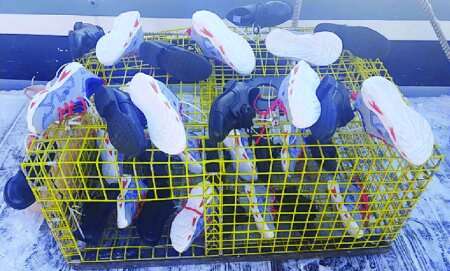Credit: CC0 Public Domain
Why barnacles prefer elegant shoes and other mysteries perplexing forensic scientists.
You've watched Law & Order. You know maggots can be used to work out how long a dead body has been cold.
But what happens if a victim is dumped into the ocean?
Murdoch University forensic entomologist Dr. Paola Magni is researching barnacle growth on shoes and clothing to help detectives figure out how long a body has been in the water.
Paola recently designed an experiment where 128 pairs of footwear—64 sports shoes and 64 patent leather shoes—were placed in Boston Harbour.
The research team collected four pairs of each type of shoe every fortnight and analysed the marine life that had colonised them.
A tale of two bodies
Paola, who is often called upon as an expert forensic witness in court, says the study was inspired by two real-life murder cases in Italy.
"One person was found on a beach, and he was wearing elegant shoes," she says.
"Another person was found floating in the ocean, and he was wearing gym shoes.
"In both of these cases, we found these crustaceans attached to the shoes and the clothes … it was possible to say something about that, but not enough for me.
FORENSIC SCIENCE INTERNATIONAL Barnacles colonised the sports shoes and patent leather shoes over 7 months in the ocean (photo cropped)
"There was no research in this field."
Paola wanted to investigate whether barnacles preferred one type of shoe and whether they settled on particular parts of the shoe.
Ultimately, she aimed to discover whether marine life can be used to more precisely estimate how long a body has been under water.
Crustacean fashion
Paola says barnacles are just like her—they love shoes.
They can provide information vital to an accurate crime scene reconstruction.
"The species of the barnacles can tell us where the body came from," Paola says.
"The size of the barnacle can tell us how long the body has been in the water, [and] the isotopes in the shell can help to backtrack the journey of the body in the ocean."
(Incidentally, the research found barnacles prefer elegant footwear over trainers.)
Paola is now working with an honours student on a similar project with clothes.
FORENSIC SCIENCE INTERNATIONAL The experimental cage ready to be placed under water
The pair placed different types of fabric—cotton, velvet, silk and neoprene—in the ocean for 6 months to see which material barnacles attached to and when.
"The crustaceans act differently on different fabrics," Paola says.
"We can backtrack with more precision the time [a body] spent in the water."
The real CSI
If Paola's research sounds like something out of a television crime show—it kind of is.
Paola spent 8 years as a scientific adviser to the Italian equivalent of CSI—RIS Delitti Imperfetti (Unit of Scientific Investigations: Imperfect Crimes).
She worked behind the scenes to write episodes of the crime drama series, sometimes fictionalising events from her cases.
Paola set up the on-screen laboratory and taught the actors how to behave in the lab, admitting she went to extremes to ensure the program was scientifically accurate.
One of the main characters even has a forensic entomology book Paola wrote on their shelf in the show.
So keep your eyes peeled—maybe one day a barnacle will play a witness in a CSI case.
Provided by Particle
This article first appeared on Particle, a science news website based at Scitech, Perth, Australia. Read the original article.

























